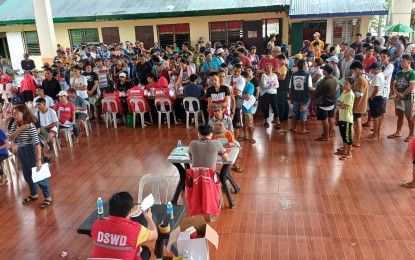TACLOBAN CITY – Eastern Visayas recorded a poverty incidence of 20.3 percent last year, reflecting a decrease of 1.9 percentage points from the 22.2 percent reported in 2021.
This reduction means that 10,264 more individuals in Eastern Visayas rose above the poverty line during this three-year span as noted by National Economic and Development Authority (NEDA) Assistant Regional Director Jam Colas-Villaber.
Villaber referenced the data from the Philippine Statistics Authority (PSA) indicating that the region's poverty ranking has improved over the last seven years.
In 2018, Eastern Visayas was the third poorest region in the country, and it fell to the fourth spot in 2021, ultimately dropping to fifth place this year.
Contributing factors to the reduced poverty rate include a recent wage hike, enhanced government cash assistance for the poor, and a lack of severe natural disasters in most areas last year.
Villaber emphasized the need for further initiatives to eliminate poverty, as the current reduction still falls short of the targets set in the Regional Development Plan.
Still poor
Despite the improvement, 1.34 million people in Eastern Visayas continue to live in poverty, she added.
For a family of five in Eastern Visayas, a monthly income of at least PHP 13,492 was necessary to meet basic food and non-food needs last year, which is an increase from the P 11,187 threshold in 2021.
Wilma Perante, Regional Director of the PSA Eastern Visayas, clarified that a poverty incidence of 20.3 percent indicates that roughly one in every five families in the region lived below the poverty threshold necessary for basic sustenance.
Over the past three years, five out of six provinces in the region successfully reduced their poverty levels.
Northern Samar, however, experienced a worsening situation, with its poverty rate increasing from 19.3 percent to 21.8 percent, largely due to extensive flooding in late 2023, according to NEDA.
Meanwhile, other provinces saw improvements: Samar had a poverty incidence of 24.9 percent in 2023, down from 27 percent in 2021.
Eastern Samar recorded a decline to 24.7 percent from 29.4 percent two years prior.
Leyte's poverty rate slightly fell to 21.7 percent in 2023 from 22 percent in 2021.
Biliran made a substantial drop in poverty to 8.5 percent, down from 19.9 percent, while Southern Leyte decreased to 7.1 percent from 16 percent.
Tacloban City, the region's only highly urbanized area, reported a poverty incidence of 10.6 percent in 2023, slightly lower than the 10.7 percent noted two years earlier.
These statistics were derived from the 2023 Family Income and Expenditure Survey conducted by the PSA.
The survey analyzes families' incomes and their capacity to meet basic food needs, ensuring 100 percent adequacy for energy and nutrients, and 80 percent for other nutrients.
It also assesses families' abilities to cover essential non-food expenses, including clothing, housing, utilities, healthcare, education, transportation, and personal care.
Teach the people to fish
While there is still a need to decrease the existing poverty in the province, locals believe that flooding of cash assistance in the region played a vital role in increasing the purchasing capabilities of the public.
However, some believe that this might also mean that many are now solely relying on what they will receive from said payouts.
"Maupay kun tuod nga na Ibanan an poverty ha region pero kun dara ito ha mga assistance la, ano man it matatabo kun mabalyuan na it presidente ngan di n sugad ka damo it release dinhi ha at?," alyas Angelica, an office staff said.
"Bagat unfair gad gihapon ma'am kay kami nagpapakaguol ha trabaho, bayad hit buwis tapos di kami hito eligible kay may trabaho kuno tapos it iba nag pipinan hulat na ngan la hito na mga release."
#WeTakeAStand #OpinYon #OpinYonNews #NEDA #PSA
